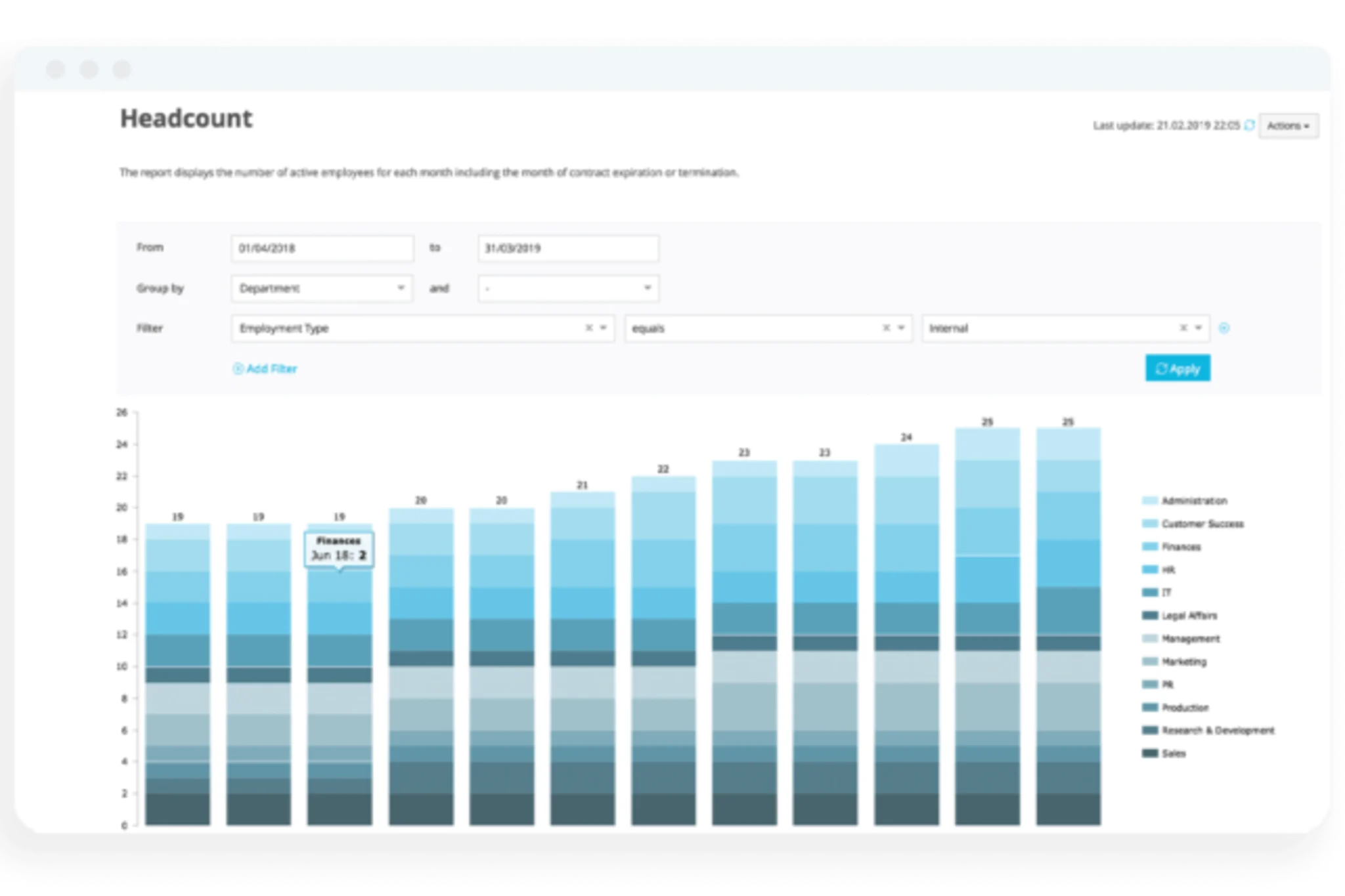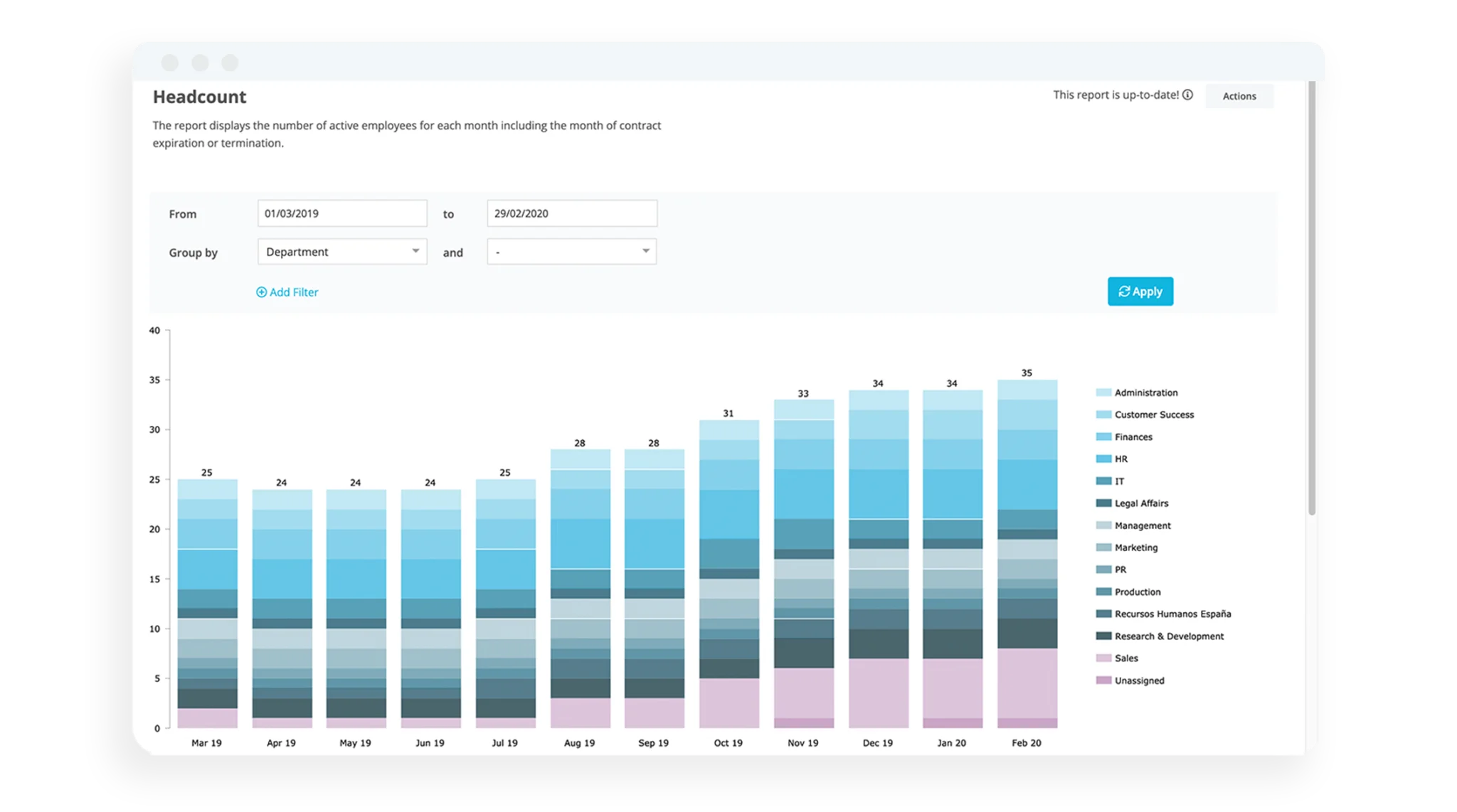
People Strategy Guidebook
A free guide to help power your next great people strategy.
Download our guide to developing your organization’s own people strategy today.How Do You Measure Revenue per Employee?
Have you been looking into your revenue per employee (RPE) metrics? Should you be? RPE is a simple indicator of how much revenue the average employee generates for your business — which you can use to gauge your workforce’s productivity and efficiency.
In this article, we’ll discuss how to calculate revenue per employee and how you can go about improving it within your organisation.
Key facts:
Revenue per employee is an important metric to track, as it helps you understand your productivity and efficiency on an organisational level.
It’s important to only compare revenue per employee between organisations in the same industry, because the standards are different in different sectors.
To improve your revenue per employee, you need to find ways of boosting efficiency and productivity in your workforce. That might mean delivering more adapted training programmes or introducing initiatives to boost engagement.
What Is Revenue per Employee?
Revenue per employee (RPE) is a metric used to determine how much revenue the average employee generates for your business. It’s a useful HR KPI, because it gives you an idea of your workforce’s overall efficiency and productivity.
Once calculated, your RPE can be compared against other companies in your industry to see how well you’re performing industry-wide. Or, you can simply track your own RPE over time, which can help you to understand the impact of changes to your business on your workforce.
How to Calculate Revenue per Employee
The formula for calculating revenue per employee is:
Revenue / Total number of employees = Revenue per employee
Here’s an example to help you understand:
Let’s say that you run a small business that employs 50 people, and your annual revenue is £500,000. To calculate your revenue per employee, you need to divide your total revenue by the number of employees. This gives you a revenue per employee of £10,000 (500,000 / 50 = 10,000).
Factors Impacting Revenue per Employee Ratio
To make useful comparisons between your organisation and others, you need to understand some of the factors that can impact revenue per employee. Here are three of the main contributors:
1. Industry
The industry you work in has a big impact on your revenue per employee. That means that it’s important to only compare RPE across organisations in the same industry as yours. Otherwise, you might end up with a skewed idea of how your business compares to others. According to research from 2020, the industries with the highest revenue per employee in the UK include energy, finance and utilities.
2. Employee turnover
When you’re short-staffed, your remaining employees often have to spend more time learning and taking on new responsibilities — which can leave their core duties neglected. They may also have to devote time to the recruitment and selection process, which can be lengthy. And even when you’ve hired a new employee, it can take a while to get them up to speed. Plus, high turnover can also lead to low morale, which has an impact on productivity too.
All of this means that revenue per employee tends to drop when a company is seeing high attrition. Tracking RPE over time can help you understand the impact that your turnover rate has on your business performance.
3. Company age
Newer organisations tend to have lower turnover and profit margins, especially in the very early stages. This means that comparing your young organisation to other more established players can be disheartening.
Instead of doing this, it might be more useful for newer organisations to simply continue measuring their own RPE as it (hopefully) grows over time. This can be a useful way of ensuring your revenue and profit margins are moving in the right direction — without comparing yourself to other organisations before you’re ready.
Revenue per Employee Benchmarks
The size and nature of your organisation have a huge impact on your RPE, as does the industry you work in. It wouldn’t be very useful to compare the revenue per employee of a huge, multinational tech conglomerate with a small mom-and-pop bakery, for example.
The best way to determine whether your revenue per employee is good enough is to conduct market research within your industry. Then, you can compare your RPE to those industry benchmarks to determine how well you’re performing compared to your competitors.
How to Increase Revenue per Employee
Here are some of the things you could do to boost revenue per employee:
Find the Right Managers
Good managers help their teams by establishing priorities, removing obstacles and providing the resources and guidance they need. The best ones also work hard to build a productive, nurturing environment where employees feel secure and happy — and capable of doing their best work.
In other words, recruiting top-quality managers is one of the best things you can do to improve revenue per employee. And there’s hard evidence to back this up too: according to one study, business units with strong managers experience 27% higher RPE than those without.
So, what should you look for in a manager? Well, you need to know that they have the right qualifications and experience to be successful, of course. But it’s just as important that they have soft skills like empathy and listening, to ensure they’ll be able to fully support the employees working under them.
Support Employee Development
When employees don’t have all of the information, skills and knowledge they need to perform their duties, you’ll see poor productivity and performance — and a low revenue per employee.
The answer? Provide your employees with the useful, targeted and appropriate training that they actually need. This gives your employees the best chances of performing their roles effectively (and boosting your RPE). Plus, it also shows those employees that you value them and are invested in their futures. This only makes them more likely to work to the best of their abilities.
Help Employees Work to Their Strengths
Everyone is good at different things — and less good at others. That means that you might be missing out on some big productivity gains if you’re tying up employees’ time on tasks that aren’t well-suited to their skillsets.
Try to work with your employees to figure out the types of work that they’re particularly good at. Helping employees to work to their strengths (and further developing those strengths with targeted training) can help you to boost efficiency — and your revenue per employee to boot.
Make Employee Engagement a Priority
Disengaged employees might be bored, stressed, or just plain uninterested in their work — none of which screams ‘productive’ or ‘efficient’. And Gallup research suggests that only 32% of employees are actively engaged at work — and 18% are actively disengaged. To combat this, you need to work on boosting employee engagement — and there are a number of ways to do this.
Be careful not to focus solely on surface-level perks like free food, drinks and other goodies. While they might not hurt, you’ll likely get better results by focusing on developing and supporting your employees, demonstrating that you trust them, and building a culture that values each employee as a person — not just a number on a spreadsheet.
Frequently Asked Questions: Revenue per Employee
Here are the answers to some FAQs about revenue per employee:
What Is the Revenue per Employee Ratio?
The revenue per employee ratio (or simply revenue per employee) is the amount of revenue generated by each employee on average in an organisation.
How Do You Calculate Revenue Per Employee?
You can calculate revenue per employee using a simple formula:
Revenue per employee = Revenue / Number of employees
How Can You Increase Revenue per Employee?
You can increase revenue per employee by helping every employee to perform their best work. For example, providing targeted, valuable training and creating a supportive work environment can both be useful.
Why Is Revenue per Employee Important?
Revenue per employee is important because it gives you an idea of your workforce’s overall productivity, efficiency and performance. In general, the higher your revenue per employee, the better your company is performing.
What Is the Difference Between Revenue per Employee and Profit per Employee?
The difference between revenue per employee and profit per employee comes down to the difference between revenue and profit. Revenue is simply the total income that a company generates through its business operations, while profit is that same figure, minus the costs and expenses of operating. This means that profit per employee takes into account the various costs that are involved with running the business, whereas revenue per employee is a simpler measurement of you organisation’s core efficiency.
Boost Efficiency and Productivity With the Right HR Tools
Improving your revenue per employee effectively means boosting your employees’ productivity, efficiency and engagement. And to do that, you need the right tools.
Personio is an all-in-one HR platform that helps you to more efficiently source, hire, train and manage your employees, by simplifying and automating repetitive tasks and streamlining workflows. Put simply, Personio gives HR teams back the time they need to focus on what matters — people.
Want to learn more about Personio? Start your no-obligation free trial today.

